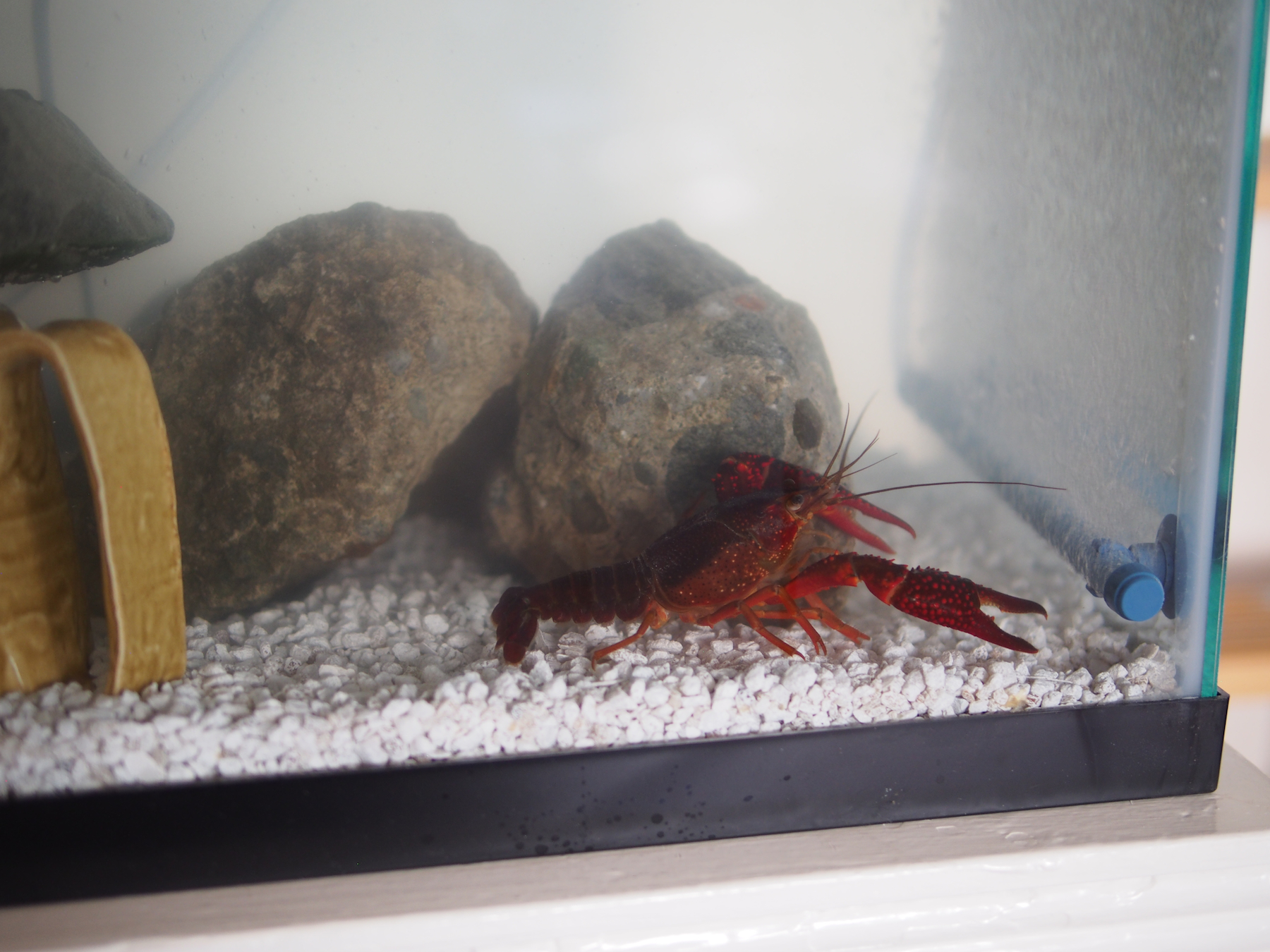This semester, I am teaching a small seminar class for undergraduates on economic development.
The goal of the class is to write a research paper, and the syllabus is here. If you would like to follow along with the course, the webpage is here.
Something a bit different: I unexpectedly came into the role of caretaker for a crayfish who had escaped from a San Francisco street food festival.
I’d been invited to the fair, and while walking around we came across a crayfish, almost the length of a hand, on the road. At first, we thought he was a wild crayfish, and the immediate concern was that with all the people milling about, he would be stepped on. So I set my bag down on the ground and he wandered in. The plan was to get him off the road, find his natural habitat and release him.
But then we saw the sign advertizing cooked crayfish several yards away. The little guy must have been an escapee from one of the food trucks, where he had been about to be killed and eaten.
Googling, it turned out that it’s illegal to release this kind of crayfish outside — he belongs to the highly invasive P. clarkii species. Not only that, but having been raised for food all his life, I was doubtful he would know what to do in the wild.
So he’s staying over, christened Sammy. I didn’t know the first thing about taking care of crayfish, but I know a lot more about them now, and I think they are underrated. When I first picked him up, I panickedly called the animal advocacy group Direct Action Everywhere, which I knew had a large local chapter, asking for advice. They kindly passed the message on to 200 local animal advocates, who stepped forward in an amazing way with tips and tank offers. Here’s a picture of Sammy in his new digs:

Some things I’ve learned about crayfish:
– There’s increasing evidence that crustaceans feel pain. This was heartening for me to hear, because I remember when I was in high school, the sentience line was drawn at fish — at the time, people argued whether or not fish could feel pain and largely assumed crustaceans didn’t. But it appeared to me then that the line was constantly being pushed back to encompass more and more species, and here was an example of that in action.
– Sammy, like most crayfish, likes to hide in his cup or between or under rocks. He will even scoot about his tank pulling his cup along with him, like a snail. He also hordes food. He eats algae wafers, frozen peas and carrots. We try to keep his tank in the dark, since he prefers that, but if disturbed, he’ll take a defensive posture over his food stash, a claw cocked and at the ready.
– Crayfish can get stressed out. It’s obvious when he’s unhappy (apart from the rescue day, he doesn’t like it whenever we clean his tank). I’ve read that there’s evidence that crayfish respond to some of the same anti-anxiety drugs as humans.
– He really likes to climb. He will climb everything, including trying to climb up the water filter.
All in all, I really like our visitor. I can’t stand thinking what his fellow crayfish went through and the stresses they must have faced being farmed and brought to the market (among other things, crayfish are solitary creatures and will fight when in close quarters with one another, so a crayfish pile seems inhumane). I also have a more immediate response to crustaceans sold in stores, such as shrimp.
In my last post, I wrote that effective altruism does not, in and of itself, imply any particular approach (e.g. political campaigning, donating to charity, etc.). Effective altruists are perhaps most often criticized for supporting charities, but a straw poll on the Effective Altruism Facebook group (undoubtedly a selected sample) showed even more people were in favour of “systemic” change focused on “creating incremental improvements to society’s political, economic, legal institutions and cultural norms.” Economists have done studies relating to both these approaches, with varying degrees of success, and I feel should engage more with the effective altruism community to share what they’ve learned.
I will actually be speaking at the Effective Altruism Global summit in SF this weekend, sharing my work on how much we can generalize from impact evaluations. If any economists would be interested in speaking at EA Global next year, let me know.
Will MacAskill’s book on effective altruism, reviewed over at Marginal Revolution, is coming out today. It’s remarkable how rapidly the label has spread.